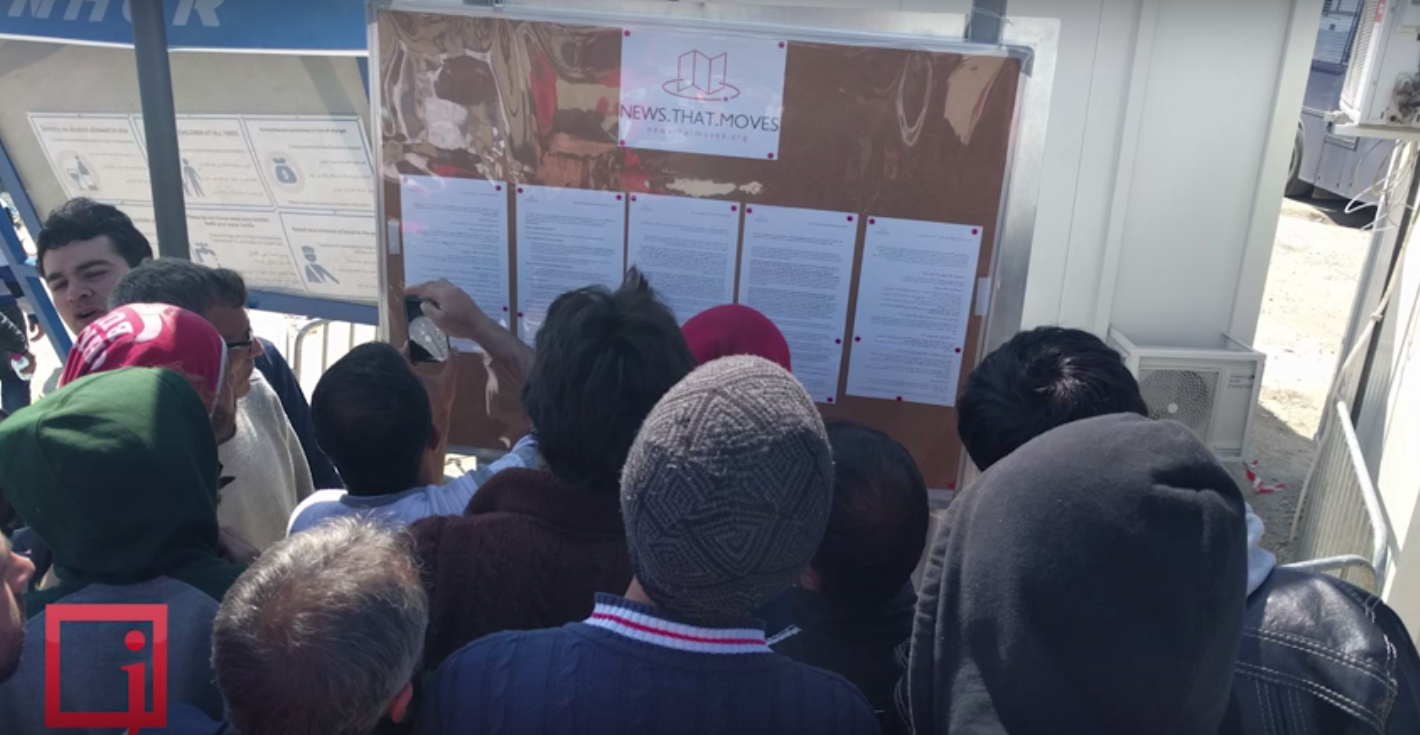By Nicole Williams, IRB Reporter
Migrants fleeing Syria face an incredibly dangerous and chaotic journey. Most make the journey with very little reliable information about where to go, what to do and how to do it. A non-profit website, News That Moves, is working to provide that critical information to refugees.
The campaign was developed by InterNews, an international media development organization. Alison Campbell is the senior director for global initiatives at Internews and leads the team behind newsthatmoves.org. She sat down with J-Source for a video interview to talk about the vital need for accurate information for refugees to combat the dangers of rumours.
Canadian freelance journalist Doug Earl recently returned from several months on the project, based in Belgrade to supervise content gathering and publishing. He tells J-Source how he translated his skills from journalism to humanitarian help by providing critical information to migrants about where to go, what to do and what resources are available to them along their journey. This interview has been edited and condensed for clarity.
J-Source: Can you tell us a bit more about your experience in the campaign?
Doug Earl: When I joined the project they had set up a network of stringers who were local journalists monitoring newspapers and doing firsthand reporting on the refugee population passing through these countries. They were filing features, news items or “backgrounders,” which is straight information about facilities and routes for these countries. What I did was communicate with those stringers on a daily basis, help them shape their newsgathering and stories they were filing to us.
I was also working with an experienced journalist who helped bridge the language gap between the stringers and had a lot of local knowledge.
A lot of what I did was working on how to achieve the goals of the project. We needed to make sure we understood the information needs of the primary audience so that what we were publishing worked for them.
J-Source: What were some of the challenges you faced with this project?
DE: To my mind, this was a completely unique project. I don’t know any other organization that has attempted it. We wanted to target online news service for a population under enormous stress.
They are often in life and death situations. The biggest challenge is that this population is constantly on the move. There were people in countries like Turkey trying to make the trip, there were those in Europe who were trying to settle and then those just trying to get to Germany and Austria.
Language was a huge problem. Most people spoke Farsi and Arabic. We were working with a team of reporters that spoke varying degrees of English. Some stringers couldn’t write in English at all so that was very challenging. Others were very much the same. Everyone was competent in their own language but when they tried to write in English they were often less confident, less colloquial.
Another issue was timing. There was not that much time to get this thing running. It’s a really far-reaching project when you see how it’s structured. I call it a “pop up” project and with so many people involved. We had stringers in Slovenia, Macedonia, Belgrade, project management in Washington and an IT aspect in California. Just thinking about it, this kind of construct was pulled out of various resources, and people from everywhere that were pulled from a bunch of places. And it worked.
J-Source: Can you go into a little more detail about the challenges of delivering critical information?
DE: Well, a lot of this project was trying to understand the information needs of people. Because it’s such a chaotic situation, it’s almost impossible to do but we just did it.
One of the fault lines that ran through this project was trying to strike a balance between them needing to know what’s in store on the road ahead. We were also trying to determine what resources would be available to them at the upcoming location. It was a gathering of all this micro-information on the resources and services they would need.
We also looked at the legal situation. What kind of documentation they would need from one place to the next and from one week to the next. On one hand, what humanitarian information would they need, and which way were the winds blowing in Europe? Would they be welcome here and how were the political winds shifting and what pressures like if countries would be welcoming. What was that balance we should be striking?
J-Source: How did your work as a journalist translate into humanitarian aid?
DE: We tried to apply our acumen as journalists to determine what we thought migrants would need. It took us back to a time before the content of journalism was for ratings.

